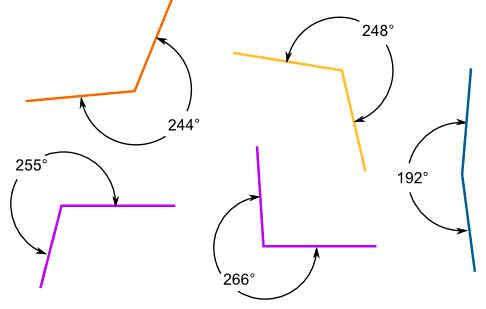When the values of two angles add up to 180 degrees they are called supplementary angles. In this case, both the angles measure 90 degrees each so they sum up to 180 degrees. Supplementary angles need not touch each other or have to be in the same plane. The main criteria to fulfill are that the addition of their values should give 180 degrees.
Illustrative example:
The two angles are said to
be complementary if they add up to 90 degrees. E.g. if there are two angles;
Angle A measuring 30 degrees and B measuring 60 degrees, they add up to 90
degrees. These can be said to be complementary angles.
Examples of complementary angle:
An angle that measures
more than 180 degrees but less than 360 degrees is called a reflex angle. A
reflex angle is always lesser than a complete angle, which measures exactly 360
degrees.
Two angles are called adjacent angles, if they have a common side and
a common vertex.










Very nice explanation and if anyone needs basics about What are Complementary Angles then this blog will be helpful.
ReplyDeleteThank you anky... :)
ReplyDelete